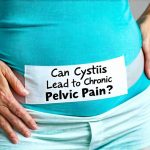Interstitial cystitis (IC), now more commonly referred to as bladder pain syndrome (BPS) due to its complex and often poorly understood nature, is a chronic condition causing bladder pressure, bladder pain, and sometimes pelvic pain—even without an infection. It’s a frustrating illness because symptoms can come and go, mimicking urinary tract infections (UTIs) or other conditions, leading to delayed diagnosis and significant impact on quality of life. Many individuals live with undiagnosed IC for years, struggling to find relief and often feeling dismissed by healthcare providers due to the elusive nature of the condition and lack of definitive diagnostic tests. Understanding the potential early signs is crucial not just for seeking timely medical attention but also for advocating for your health and navigating a system that can sometimes be challenging when dealing with chronic pain conditions.
The challenge with IC/BPS lies in its varied presentation. There isn’t one single symptom that definitively points to the condition; instead, it’s often a constellation of symptoms that, when considered together, raise suspicion. These symptoms can also fluctuate significantly—a patient might experience debilitating pain for weeks then have periods of relative calm where symptoms are minimal or even absent. This variability makes self-diagnosis impossible and underscores the importance of consulting with a healthcare professional if you suspect something is amiss. It’s also vital to remember that IC/BPS isn’t typically life-threatening, but it is profoundly disruptive to daily living, affecting everything from work and social activities to intimate relationships.
Recognizing the Initial Symptoms
The earliest signs of interstitial cystitis are often subtle and easy to dismiss as something else. Many people initially attribute their symptoms to a UTI, food sensitivities, or simply stress. However, unlike a typical UTI, IC/BPS doesn’t usually involve fever or back pain. Instead, the hallmark early symptom is persistent bladder discomfort, even when the bladder isn’t full. This can manifest as:
- A nagging ache in the lower abdomen
- Pressure in the bladder area that doesn’t necessarily correlate with how much fluid you’ve consumed
- A sense of urgency to urinate, even shortly after emptying your bladder
- Discomfort or pain during and/or after urination (dysuria) – though often less severe than a UTI
The frequency with which people need to urinate is also a key indicator. While everyone needs to go to the bathroom periodically, those in the early stages of IC/BPS may find themselves needing to void much more frequently than usual—sometimes every hour or even more often. This isn’t just about feeling the urge; it’s about actually needing to go despite having recently emptied their bladder. It’s important to distinguish this from simply drinking a lot of fluids – persistent frequency, even with normal fluid intake, is a red flag.
As IC progresses, these initial symptoms can intensify and become more disruptive. The pain might spread beyond the bladder to include the pelvic region, lower back, or even thighs. Some individuals also experience pain during sexual intercourse (dyspareunia). This increased discomfort often leads to anxiety about needing access to a bathroom, impacting social life and travel plans. It’s not uncommon for people with IC/BPS to modify their lifestyles significantly to accommodate their symptoms, avoiding long car rides, public events, or even certain foods that seem to exacerbate their condition.
The Role of Triggers & Lifestyle Factors
Identifying potential triggers is a crucial part of managing and understanding IC/BPS. While there’s no single trigger for everyone, several common culprits are frequently reported by patients. These can be broadly categorized as dietary, lifestyle-related, and emotional:
- Dietary: Certain foods and beverages can significantly worsen symptoms in some individuals. Common triggers include caffeine, alcohol, citrus fruits, tomatoes, spicy foods, artificial sweeteners, and chocolate.
- Lifestyle: Stress, dehydration, and prolonged sitting can all exacerbate IC/BPS symptoms.
- Emotional: Anxiety and stress are closely linked to bladder pain syndrome, creating a vicious cycle where the condition itself causes anxiety, which then worsens the symptoms.
The connection between diet and IC/BPS is particularly complex. It’s not necessarily about avoiding these foods forever; rather, it’s about identifying your personal triggers through an elimination diet or food diary. This involves removing suspected trigger foods from your diet for a period of time and then reintroducing them one at a time to observe any changes in symptoms. Keeping a detailed food journal alongside symptom tracking can be incredibly helpful in pinpointing which foods might be contributing to your discomfort.
Beyond dietary factors, lifestyle adjustments can also play a significant role. Staying adequately hydrated (with water, not bladder irritants!), practicing stress-management techniques like yoga or meditation, and incorporating regular gentle exercise can all help mitigate symptoms. It’s worth noting that overactive pelvic floor muscles are often associated with IC/BPS; therefore, pelvic floor physical therapy can be a highly effective treatment option for some individuals.
Understanding Urgency & Frequency
Urinary urgency – the sudden, compelling need to urinate – is one of the most common and disruptive symptoms of IC/BPS. It’s not just about feeling like you should go; it’s an overwhelming sensation that demands immediate attention. This can lead to accidents or “urgency incontinence” in some cases. Frequency, closely linked to urgency, refers to needing to urinate more often than normal—typically defined as eight or more times in a 24-hour period.
The difference between frequency and true polyuria (excessive urine production) is important. To differentiate these, you can perform a “voiding diary” for several days. This involves meticulously tracking the time of each urination, the amount of fluid consumed, and any associated symptoms. If your total 24-hour urine output is normal but you’re still urinating frequently, it suggests that your bladder is simply more sensitive rather than producing excessive amounts of urine. This sensitivity is a hallmark characteristic of IC/BPS.
Pain Patterns & Locations
The pain associated with interstitial cystitis isn’t always localized to the bladder itself. It can radiate to other areas of the pelvis and lower body, making it difficult to pinpoint its source. The nature of the pain also varies considerably from person to person. Some describe it as a burning sensation, others as a dull ache, and still others as sharp stabbing pains.
- Bladder pain: This is the most common location, often described as pressure or fullness in the lower abdomen.
- Pelvic pain: The pain can spread to the pelvic floor muscles, causing discomfort that’s exacerbated by movement or sitting.
- Perineal pain: Some individuals experience pain in the area between the genitals and anus.
- Pain during intercourse (dyspareunia): This is a common symptom for women with IC/BPS, often due to inflammation and sensitivity in the pelvic region.
The pain can also be influenced by bladder filling. Many patients report that their symptoms worsen as their bladder fills and improve after urination – although this isn’t always the case. The key is to pay attention to your specific pain patterns and how they relate to your activity level, fluid intake, and other factors.
Seeking Diagnosis & What to Expect
If you suspect you might have interstitial cystitis/bladder pain syndrome, it’s crucial to consult with a healthcare professional—preferably one experienced in treating chronic pelvic pain conditions. There isn’t one single test that can definitively diagnose IC/BPS; diagnosis is often based on a combination of factors:
- Medical history and symptom evaluation: Your doctor will ask about your symptoms, their duration, any potential triggers, and your overall health history.
- Physical exam: This may include a pelvic examination (for women) to rule out other conditions.
- Urine tests: These are used to rule out UTI and other infections.
- Potassium chloride sensitivity test: A small amount of potassium chloride is instilled into the bladder, and your pain response is assessed. This isn’t always accurate but can be helpful in some cases.
- Cystoscopy: In some instances, a cystoscope (a thin tube with a camera) may be used to examine the inside of the bladder.
Be prepared for a potentially lengthy diagnostic process. It often takes time and multiple consultations to arrive at a diagnosis because IC/BPS can mimic other conditions. Don’t hesitate to advocate for yourself if you feel your concerns are being dismissed or overlooked. Keeping a detailed symptom diary, outlining your triggers, and preparing specific questions for your doctor will help ensure that you receive the best possible care. Remember, finding a healthcare provider who listens and understands your experience is paramount in navigating this complex condition.





















